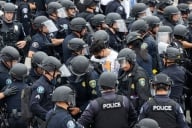You have /5 articles left.
Sign up for a free account or log in.
Last Sunday, when forecasters first began to predict then-Tropical Storm Isaac might hit New Orleans, staff at all Delgado Community College’s campuses were immediately set to work tying down loose items and clearing drains and gutters.








